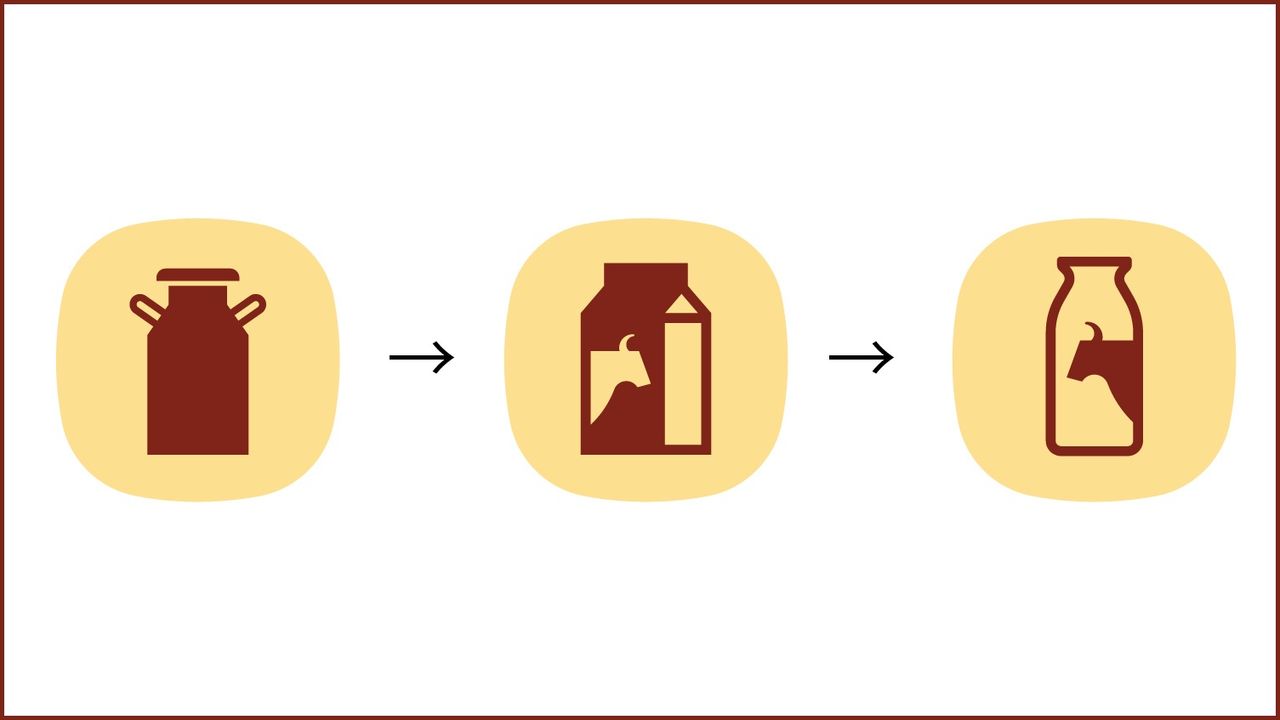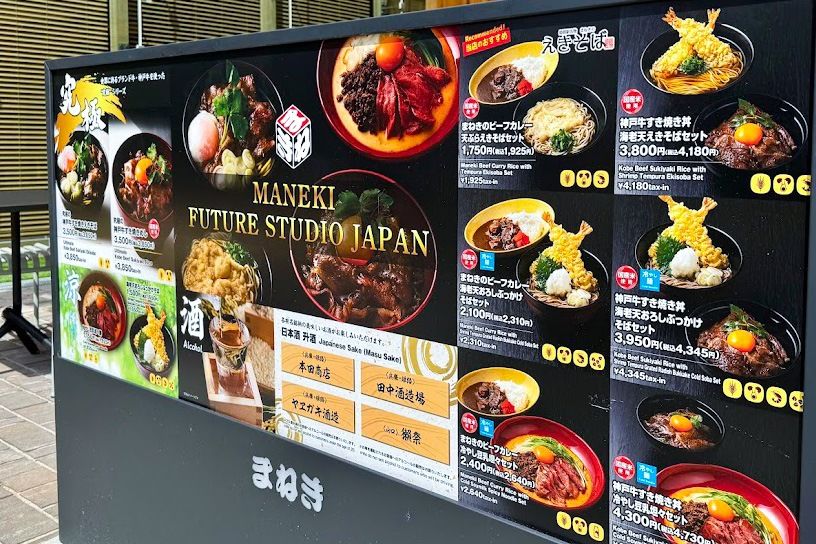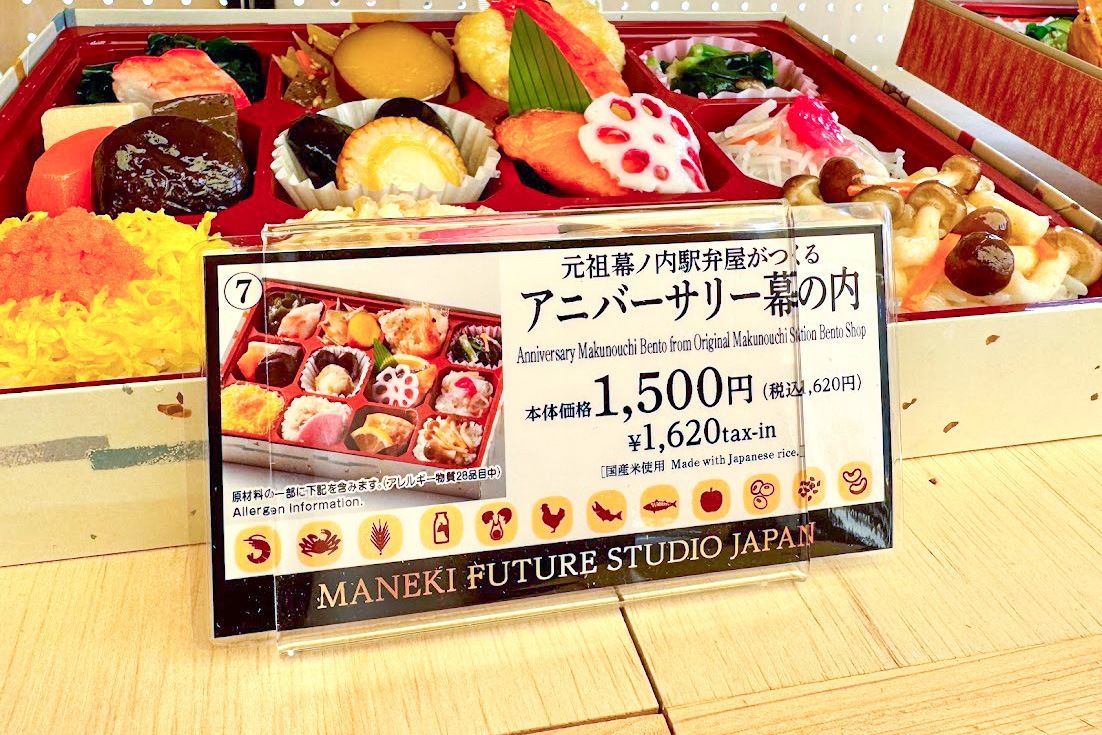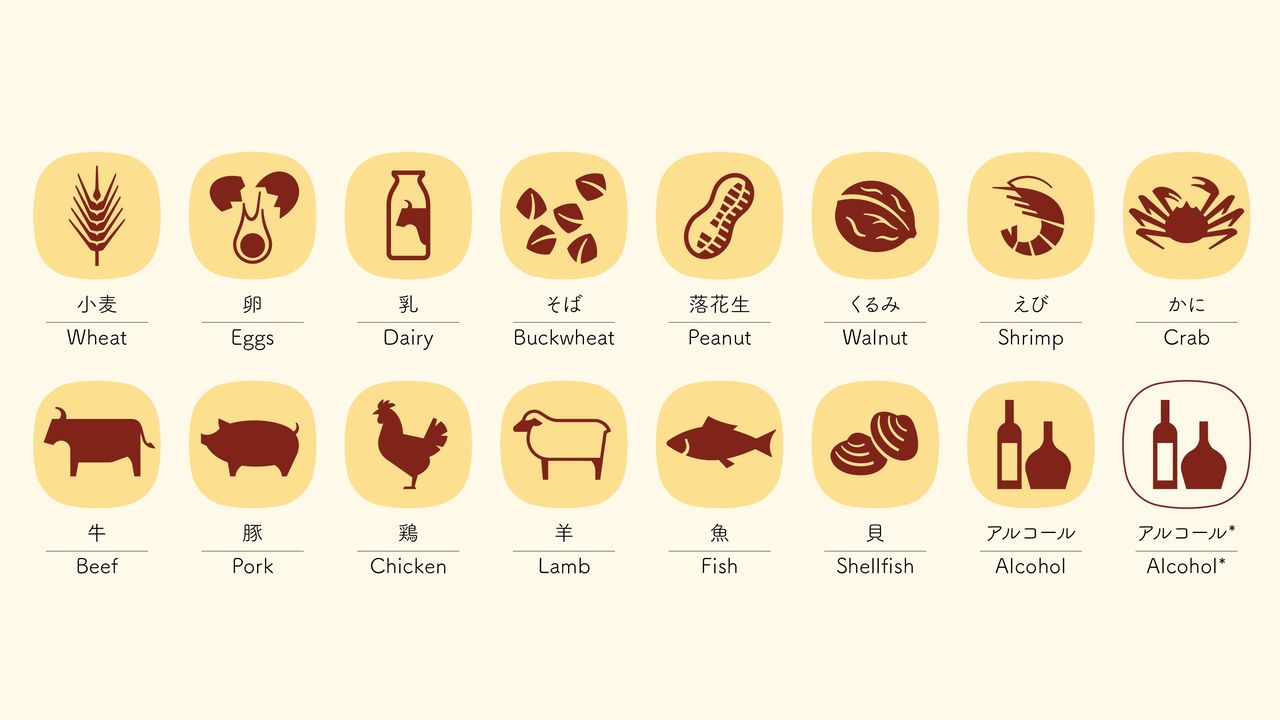Pictograms representing different ingredients provide vital information at a glance for people with food allergies. The “foodpicts” are helping people from around the world to dine with peace of mind at the 2025 Osaka Expo.
Japan introduced pictograms for the Olympics at the 1964 games in Tokyo and their help in identifying each sport at a glance made them a mainstay of the event. In the same vein, “foodpicts” are iconic images that help diners identify 38 different ingredients that may be of concern for people with food allergies—like wheat, eggs, buckwheat, shellfish, or nuts—or those with religious or other food restrictions.
The developer is Kobe-based venture firm Foodpict. CEO Kikuchi Nobutaka recalls his own experience from his university days as an early inspiration. In 2005, he tried in vain to find a local restaurant serving dishes made without pork or alcohol for a Muslim visitor from Saudi Arabia. After giving up, he ended up taking his guest to a fast-food chain for a fish sandwich. Memories of that embarrassing experience are behind the development of Foodpicts.
Appetizing Images
In seeking to bring an international vision to Foodpicts, Kikuchi called on an experienced design director. Their discussions drove him to focus on making sure the images looked appealing and appetizing. The frames are gently curved ovals, the backgrounds use the pastel yellow of custard cream, and the drawings are the rich brown of demi-glace sauce.
To achieve useful pictograms, firm representatives carried out surveys using test images with 1,500 respondents, of whom half were Japanese and half from overseas. They checked the comprehensibility and visibility, and made repeated improvements.
The most difficult challenge was dairy products. The first test image used an old-fashioned milk can, but recognition among non-Japanese respondents was below 70%, so they tried changing it to a milk carton. However, they realized that some regions do not use milk cartons, so in the end changing to a milk bottle with a picture of a cow helped comprehension surpass 90%.

The evolution of the dairy pictogram. From a milk can at the left to a milk bottle on the right. (©︎ ︎Foodpict and NDC Graphics)
They also prepared two pictograms for alcohol. For Japanese dishes made with nihonshu that have been heated so the alcohol evaporates, so it is “non-intoxicating,” the image background is white to differentiate from those with active alcohol content.
Kikuchi explains, “We keenly felt the need for pictograms to reach beyond differences of nation, region, or culture.”
Dining with Peace of Mind
In 2010, after a long run of trial and error, Kikuchi’s team completed 14 pictograms based on JIS and ISO standards. They were used at the 2019 G20 Summit in Osaka, where they garnered international attention. Two decades since the idea’s inception, and after adapting to changes such as including newly identified allergens like macadamia nuts, there are now a total of 38 pictograms.
Now, Foodpict pictograms are in use at international airports like Narita, Haneda, or Kansai, as well as at hotels and restaurants with many international customers. The pictograms are on food labels used by about 100 companies at over 1,600 shops.
At the Osaka Expo, they are found on menus and price cards at over 80 locations, including the Osaka Restaurant Management Association pavilion, where they are helping guests from around the world to dine with greater peace of mind and enjoyment.

A menu board at the Osaka Expo venue. (Courtesy Foodpict)

The Makunouchi Bentō lunches sold at the Expo have Foodpict graphics on their labels. (Courtesy Foodpict)
Kikuchi commented that he was pleased that so many people like them. “Just as people gather at the same table regardless of nationality, origin, or culture, and share the joys of dining, we want Foodpicts to spread around the world, beyond Japan’s borders.”
There are also growing hopes for use in disasters. After the 2011 Great East Japan Earthquake, issues of sharing information about ingredients with allergy sufferers or international residents at evacuation shelters provided valuable lessons, and now the company is working with the administration and local governments to distribute information.
(Originally published in Japanese on June 11, 2025. Reporting, text, and photos by Nippon.com. Banner photo: These 16 food pictograms were the foundation of the 38 that exist today. ©︎ ︎Foodpict and NDC Graphics.)
